#φ=the golden ratio
Text
Virtual Photography Guide: Composition (Part 2)

Let's continue exploring composition with a few more guidelines used in real-life photography, together with some FFXIV examples!
Rule of Thirds
The Rule of Thirds involves dividing the viewport into a 3x3 grid by drawing two horizontal lines and two vertical lines, resulting in nine equally sized rectangles.
According to the rule, placing key elements of interest along these gridlines or at their intersections create harmonious compositions and draws the viewer's eye in a visually pleasing and balanced way:

Rule of Odds
The Rule of Odds suggests that using an odd number of elements, such as three or five, tends to be more visually interesting and engaging compared to an even number. The Rule of Odds can be used to create a sense of asymmetry, tension, and visual flow:


Rule of Space
The Rule of Space emphasizes leaving empty space or room within the frame, specifically in the direction that the subject or elements are moving or looking towards. It adds a sense of direction or movement and allows the viewer to engage with the image more effectively:



Golden Ratio
The Golden Ratio, also known as the Divine Proportion or Phi (Φ), is a mathematical concept and compositional guideline used in various art forms. It is a ratio of approximately 1.618:1 and is considered aesthetically pleasing to the human eye.
In photography, dividing the frame into sections based on the Golden Ratio and positioning important subjects or focal points along these divisions creates a visually appealing and balanced composition. That way, compositions that feel harmonious and naturally pleasing:


So there you have it! while not comprehensive, these guidelines may help create shots that are engaging and pleasing to the eye.
You can now find this and all the previous guides and reference materials in our Discord server, Sights of Eorzea. Come check it out!
439 notes
·
View notes
Text
It's kinda fucked up that φ is the solution to all these really intuitively appealing "self-referential" problems, right—it's the golden ratio, it's the most irrational number, x^φ is the solution to f'(x)=f^{-1}(x) and shit like that—and yet it's like, not important at all in higher math. That's fucked up. I do love φ though, it's such a nice number.
73 notes
·
View notes
Text
Good Omen's Ms Cheng: Reading Into Every Little, Probably Irrelevant Detail

So, I've noticed three things about Ms Cheng. Her name, her clothes--which change upon arrival at Aziraphale's ball--and her earrings--which don't.
Let's start with her surname. As far as I know, we didn't learn her first name, so the name Cheng is what we have to work with. But what does it mean?
Well, according to Behind the Name, Behind the Surname, and Google Translate, there are several meanings, depending on which character is used--I don't think we were shown this.


So, we have "completed, finished, succeed", "sincere, honest, true", and "rule, order, regulations" for the meaning.
And what do the possible characters themselves mean?


There's procedure and sincerity, which we already knew. But there is also journey,

and become.

It's also worth mentioning the similar and related name Chen, meaning "exhibit, display, old, ancient."

Old and ancient might be relevant, considering Good Omens is a show about ancient, immortal beings, God included (though suspiciously absent from Season Two).
So what significance does Ms Cheng's name have, if any?
Is it meant to imply that God has become Ms Cheng? Or maybe that the Metatron's plans will be completed and succeed?
Does the meaning 'sincere' imply we should trust Ms Cheng? Or is it an intentional misnomer, like Honest John, the lying fox in Pinocchio (pulling the strings, anyone)?
Or maybe it's just a common Chinese surname, so Neil Gaiman picked it because he liked it. Maybe the actress, Crystal Yu, chose it upon being cast in the role.
Now let's look at Ms Cheng's two outfits.



The first outfit is a dark green, almost black, and looks like it is made of of leather or something with a sheen (lol) to it.
Does this mean Ms Cheng is a demon/evil? After all we see Shax wearing something similar with green light in Hell in the next scene.

Or is that just a coincidence?

The second outfit still has green, but lighter, and also other colors, like orange and yellow (well, yellowish green), and appears to be leaves--possibly, ginkgo leaves, specifically. Ginkgo trees are native to China (though they predate China by hundreds of millions of years) and can live for thousands of years.
What's the meaning of the color green? It's associated with envy and greed, both sins, but also with good luck, hope, life, and plants (which is the pattern on her shirt at Aziraphale's party).
So it's still ineffable what this implies, if anything, about Ms Cheng.
Now, finally, let's look at her earrings.



The earring appears to be gold with a blueish/greenish stone. The gold part is a circle with a line through it, which is reminiscent of the no/stop symbol🚫, which also means empty/null, and diameter.
Could the no/stop symbol be an indication that we shouldn't trust Ms Cheng or that she (whoever she is) is being stopped?
Or could the diameter meaning be referring to the earth, because Ms Cheng is God and She's got the whole world in her hands. The earring does sort of look like if you squint--or like God has dropped the earth, if the greenish/blueish rock is meant to represent the earth, and the gold circle Her arms.
The earrings also resemble the Greek letters Phi (ϕ) and Theta (θ), which are used in math.
Phi represents the Golden Ratio, among other meanings. Phi and the Golden Ratio are present in the Bible including in Noah's Ark and the Ark of the Covenant.
Theta (θ ) is a symbol used to denote the unknown measure of an angle. Pretty Ineffable, right?
There's also this:

"In Lacanian algebra, Φ stands for the imaginary phallus and also represents phallic signification; -Φ stands in for castration."
Which, is a longshot (though perhaps cut short), but what if it means God has been castrated of Her Power, and that is why She is in Human form as Ms Cheng, and also not narrating, speaking to any of the characters, or intervening.
So, do Ms Chengs earrings have any meaning? Or is their meaning null?
What about her name and her outfits? What does everyone think?
#good omens#go2#good omens meta#good omens season 2#ms cheng good omens#renew good omens#give me season 3 or give me death#cassandraspeculates
26 notes
·
View notes
Text
"The spiral is perceived to be the torque of the universe. Found at all levels between the macrocosm & the microcosm, from spiral galaxies, to weather systems, to the water in your bathtub drain, to your DNA."
This sacred spiral, Golden Ratio, Phyllotaxis -> Φ Phi-llotaxis pattern 🌻 isn't just found all throughout which constructs nature, but is the same pattern as energy transmission lines / Frequency, to the very pattern of the magnetism itself, as seen with a magnet under a Ferrocell. 🍩 🧲 ⚛️
THIS is universal "LAW & ORDER"
See how many NATURAL sacred geometric patterns & formulas have been STOLEN & perverted by the occult, yet they're waved in our faces absolutely EVERYWHERE on a daily basis that we're completely oblivious to
⚛️ 🍩 🌀 🧲
To remove FAITH, you remove ORDER
There is DIVINE "LAW & ORDER" in the universe. But, that's the point of hiding it from us. It proves order, & of that order, proves The Divine.
You are more than you know. 🤔
#pay attention#educate yourselves#educate yourself#knowledge is power#reeducate yourself#reeducate yourselves#think for yourselves#think about it#think for yourself#do your homework#do your own research#do some research#ask yourself questions#ask yourself#question everything#spiritual growth#spiritual journey#spiritual transformation#you are more than you know
41 notes
·
View notes
Text
Exploring Sacred Geometry: Unlocking the Mysteries of Divine Proportions 🌸🔺🔵◻️
Hello darlings 🥰
Today, let's delve into the fascinating world of sacred geometry and unravel the profound secrets hidden within its intricate patterns. Sacred geometry is a universal language that transcends cultures and time, reflecting the inherent order and harmony of the cosmos. It offers a window into the interconnectedness of all things and provides a profound tool for spiritual growth and understanding. So, let's embark on a journey into the realm of sacred geometry together!
🌸 The Flower of Life:
At the heart of sacred geometry lies the Flower of Life, a mesmerizing pattern formed by overlapping circles. It is a symbol of creation and the interconnectedness of all living beings. Meditate upon its symmetrical beauty and allow its energy to awaken your connection to the divine.
🔺 The Power of Triangles:
Triangles hold immense power in sacred geometry. The equilateral triangle represents balance and harmony, while the upward-pointing triangle symbolizes fire, passion, and spiritual ascension. The downward-pointing triangle represents water, intuition, and the divine feminine. Incorporate triangles into your spiritual practice to tap into these energies.
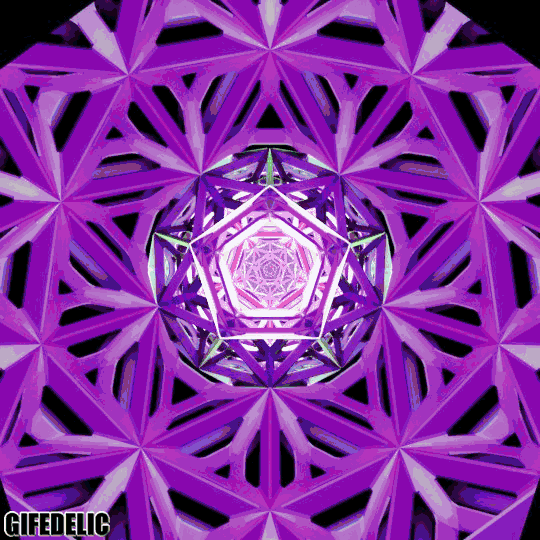
🔵 The Magic of Circles:
Circles are ancient symbols of wholeness, unity, and eternity. They represent the cyclical nature of life and the infinite possibilities within the universe. Meditate upon circles, draw mandalas, or use circular objects in your rituals to connect with the energy of completeness and divine unity.
◻️ The Power of Squares:
Squares symbolize stability, structure, and the material realm. They represent the four elements—Earth, Air, Fire, and Water—and provide a foundation for manifesting desires. Work with squares in your sacred space or incorporate them into your crystal grids to establish a strong and stable energetic framework.
✨ The Golden Ratio:
The Golden Ratio, often represented by the number phi (Φ), is a mathematical proportion found abundantly in nature and art. It is a ratio believed to embody perfect harmony and beauty. Explore the Golden Ratio in nature, art, and architecture and contemplate its presence in the world around you.
🌳 Sacred Symbols:
Discover sacred symbols derived from sacred geometry, such as the Sri Yantra, Metatron's Cube, or the Tree of Life. These symbols are potent energetic tools that can be used for meditation, manifestation, and spiritual alignment. Study their meanings and explore how they resonate with your journey.
🔷 Crystal Grids and Mandalas:
Combine the power of sacred geometry with the energy of crystals by creating crystal grids or mandalas. Arrange crystals in sacred geometric patterns to amplify their energies and intentions. Draw mandalas inspired by sacred geometry to express your inner connection with the divine.
◻️ Sound and Sacred Geometry:
Explore the relationship between sound and sacred geometry. Discover the resonant frequencies associated with specific geometric shapes and how sound vibrations can harmonize and heal. Experiment with sound healing modalities, such as chanting, singing bowls, or tuning forks, to enhance your experience with sacred geometry.
✨ Meditation and Contemplation:
Engage in meditative practices centered around sacred geometry. Visualize geometric patterns, focus on specific shapes, or use sacred geometry artwork as a focal point for your meditation. Allow these visualizations to calm your mind, expand your consciousness, and deepen your spiritual connection.

Sacred geometry is a gateway to understanding the divine order that permeates the universe. It invites us to recognize the inherent beauty and interconnectedness of all things. Embrace the language of sacred geometry, and allow it to guide you on a transformative journey of self-discovery and spiritual growth.
____
🌞 If you enjoy my posts, please consider donating to my energies 🌞
✨🔮 Request a Tarot Reading Here 🔮✨
____
With love, from a Sappy Witch 🔮💕
Blessed be. 🕊✨
#sacred#sacred geometry#geometry#tree of life#phi#mathematics#the golden ratio#meditation#contemplation#sacred symbols#crystal grid#mandala#metatrons cube#Sri Yantra#unity#eternity#magical symbols#divine symbol#witchcraft#tarot witch#witches#witch#green witch#witch community#witchy#journaling#spiritual journaling#baby witch tip#mine#sappywitch
32 notes
·
View notes
Text
the (so called) golden ratio φ has this property that it is the "most irrational" number, in the sense that its sequence of best rational approximants diminishes slowest of all real numbers (tied with the golden ratio + integers)
this is to say that like, ok, we're considering for some number α rationals p/q such that |α-p/q| is small relative to the denominator q; i.e. we're trying to find p and q co-prime minimizing |αq-p|, right
you can consider the sequence of better and better approximants |αq₀-p₀| > |αq₁ - p₁| > |αq₂ - p₂| > ... that starts with like q₀ = 1 and p₀ = floor(α), and it turns out that the α for which this sequence diminishes the slowest is φ
so, since musical notes are consonant when the ratio of their frequencies is close to a rational number, i have this strong suspicion that notes whose ratio of frequencies is φ are the most dissonant possible
so in addition to being kind of ugly when used as a ratio for a rectangle, it's also probably like the most dissonant note possible
pretty in the context of a pentagon though
106 notes
·
View notes
Text
Exhibition review
Golden ratio by Mayasa AlSowaidi
Golden ratio 1.618… Is a magical number represented by the Greek letter PHI (φ). It’s a fascinating mathematical con-stant that is found in nature, the human body, the arts, architec-ture, music, poetry, the nanos-cale word of our DNA molecule, and all the way to the infinitely large universe.




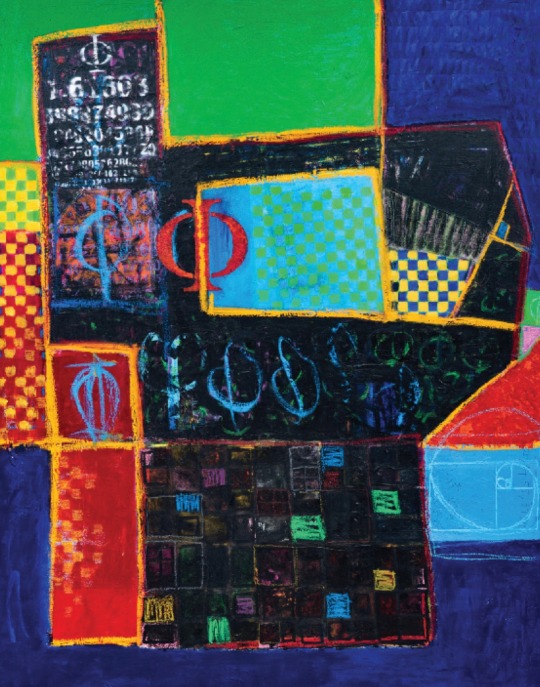


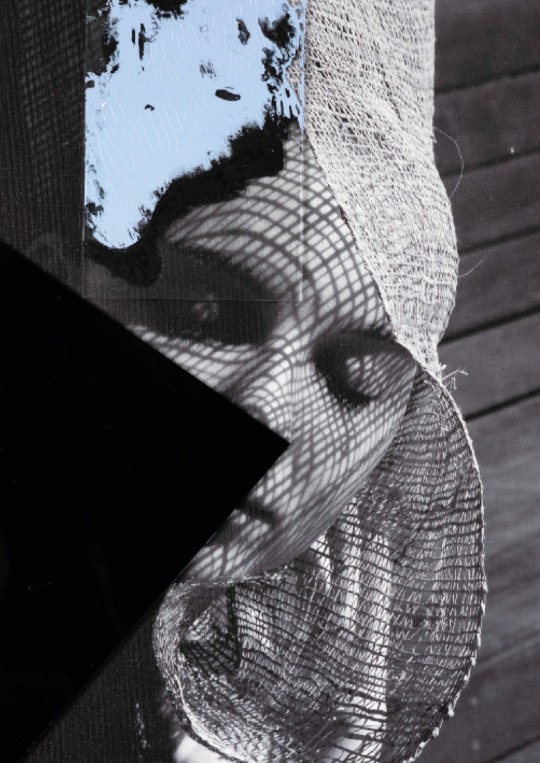


The golden ratio is not linked to straight lines since it has multiple shapes and different names, such as the famous spiral shape, which is entirely based on the golden ratio that is present in nature, in everything that amazingly surrounds us, in living beings and humans.
Mayasa conveys her experience, which includes her dreams about the concept of art and the golden ratio inherent in everything beautiful and remarkable in life in her own way of visual narration, through which she sought to leave a good impact on the feelings and taste of the recipient and to present a simplified vision regarding her understanding and convictions of the coloring things, and making them relatively acceptable, comfortable and striking to the viewer's eye
She presented a summary of her experience and knowledge in harmony between abstraction in mathematics and art, These works were distinguished by the clear contrast, the artistic maturity in the form of the performance, the construction of the work and the balance of its architecture in different forms of expression. Also The raw materials that varied between cardboard, paper, canvas, acrylic, oil colors etc, in addition to using collage and employing it in more than one place in most of the painting
She incorporated more than one style and formulation including "conceptual" art, as it contributed greatly to highlighting and transferring the popular and religious heritage of Arab society in general, and the Gulf in particular
If the golden ratio is applied to the images, it will give imaginary impressions and greatly express the feelings of the image, In this exhibition, we notice the extent of the artist's keenness and reliance on the photograph in the formation of most of her works and paintings in which she mixed the image, color and geometric shapes as vocabulary
Also she benefited from employing numbers in various places in the exhibition paintings, The presence of numbers in random areas and their relationship with geometric shapes and the image produces a new and exciting set of unanswered questions such as life, existence and happiness
@patbarak @uob-funoon
10 notes
·
View notes
Text
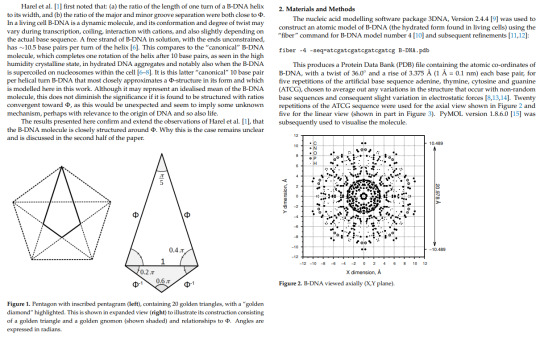

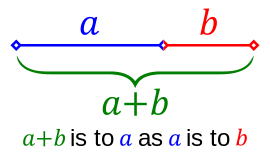


The Pentagram of Pythagoras
"Pythagoras was the first of the great teachers of ancient Greece. Born in 580 B.C., Pythagoras became one of the most well known philosophers and mathematicians in history. Creating the Pythagorean Brotherhood, his teachings greatly influenced Socrates, Plato, and Aristotle. Pythagoras is considered as the first pure mathematician; he also founded a community/society based on religion and science. He is most widely known as the author of the Pythagorean Theorem. Some even venture to believe that the word “philosophy” was invented by Pythagoras. He claimed to be a lover of wisdom, for which the Greek word philo means love and Sophia means wisdom.
The Teachings of Pythagoras revolved around the idea that when considering the deepest level, reality is essentially mathematical in nature. Pythagoreans believed there was a system of principles that existed behind numbers. The principles form a foundation for many concepts of traditional Western thought. One of his most basic notions revolves around the symbolism and beauty associated with the Divine Proportion.
The shape of the pentad follows as the symbol of life itself. The pentad consists of all previous numerical symbols: monad’s point, the dyad’s line, the triad’s surface, and the tetrad’s three dimensional volume. The pentad also refers to the well known five point star. The pentad arises in the existence of our five fingers, five toes, the symbol that wards off evil, and a symbol for power and immunity. Because of the importance of the pentad, the construction of the symbol was first kept secret from society. The pentad was used as a secret sign among the Pythagoreans for them to distinguish themselves and recognize other members.
The pentad’s symbolism can be directly related to the Divine Proportion. And the regeneration of the pentad is related to the value of phi (Ф). The image of the pentad is found in nature in leaves and flowers. The Greeks believed each point of the pentad to represent an element: water, earth, air, fire, and idea.
At any rate all his [Pythagoras'] school in serious letters to each other began straightway with 'Health to you,' as a greeting most suitable for both body and soul, encompassing all human goods. Indeed the Pentagram, the triple intersecting triangle which they use as a symbol of their sect, they called 'Health'.
Johannes Kepler (1571-1630) wrote: "Geometry has two great treasures; one is the Theorem of Pythagoras; the other, the division of a line into extreme and mean ratio. The first we may compare to a measure of gold; the second we may name a precious jewel."
...
"The axial structure of B-DNA is shown in Figures 2 and 4. The rotation of each base pair by 36◦, in the canonical B-DNA molecule, gives a complete 360◦ rotation every 10 base pairs and results in a decagonal structure and ten-fold rotational symmetry. These properties alone relate the axial structure of the molecule to Φ. Although a molecule with a decagonal form might be expected to show some simple relationship to Φ, and while there is always a danger in seeing patterns where there may be none, the axial form of B-DNA is neatly encompassed by 10 “golden diamonds” (refer Figure 1), the template of which is shown in Figure 4B, and overlaid on Figure 4A such that points (a) and (c) are located on the outermost hydrogens and point (b) is between the outer oxygen atoms."
...
"The ancient Greek followers of the mathematician Pythagoras kept the shape as their secret symbol, a signifier of wholeness or divine blessing. Nature.
The pentagram was a symbol, but also a window of sorts. It's not a shape so much as it is a relationship. Within it we find the Golden Ratio.
The Ratio is noted for both its seemingly fundamental aesthetic appeal and its (seemingly) persistent recurrence in natural and manmade systems, from plant biology to financial markets to human DNA.
It's a way of cutting up a line that appears to be preferred by nature, anyhow. Note that every time a line crosses another line, as in the sketch below, it results in a Golden Ratio relationship between the two resulting segments. So, follow a pentagram edge down until it hits the start of another point; that corner is a Golden joint of sorts.
It's possible to connect the points of a pentagram to come up with a new pentagon and, from the new pentagon, a new pentagram. And this can go on forever:
Presumably, the Pythagoreans spent a whole lot of time staring deeply into pentagrams. Tradition has it that a young Pythagorean, Hippasus of Metapontum, was doing just that when he happened up the first proof of the existence of irrational numbers, a startling revelation for the "all is number" crowd.
Hippasus noted what you see above, that the inner core of a pentagram is a pentagon, and inside of that could be found a new pentagram. Clearly, this went on pretty much forever. And it had to, which is what was eventually proved by the Greek.
Imagine Hippasus gazing into the trippy arrangement of nested pentagrams above. Each one lives within a pentagon, with its dimensions limited by that pentagon. All of these shapes clearly live within some hard and fast relationship; they define each other. That relationship is what we'd normally think of as a ratio. One shape is to the other as some quantity a is to some quantity b."
-taken from jwilson.coe.uga.edu, MDPI, freemasonrymatters, and vice
Sources and more detailed descriptions on my blog post: https://paganimagevault.blogspot.com/2022/05/the-pentagram-of-pythagoras.html
#ancient greece#science#mathematics#dna analysis#pythagoras#pentagram#pagan#paganism#history#ancient history#johannes kepler#quotes
65 notes
·
View notes
Text
The Beauty of Mathematics: Unlocking the Secrets of the Universe
youtube
Mathematics is often considered the language of the universe, an abstract symphony of numbers, symbols, and figures that shape our reality. It may be bewildering at times, but once you grasp its essence, you realize its inherent beauty.
Patterns Everywhere
Look around. Notice the petals on a flower, the spiraling pattern of a pinecone, or the graceful curve of a seashell. The consistent patterns reflect a mathematical principle known as the Fibonacci sequence. This sequence begins with 0 and 1, and each subsequent number is the sum of the previous two. The sequence's connection with nature is mesmerizing, revealing the wondrous beauty of mathematics.
The Circle of Life: Pi and its Mysteries
In the grand circle of life and the universe, there's a number that stands out—Pi (π). Pi, the ratio of a circle's circumference to its diameter, is an irrational number, meaning it cannot be expressed as a simple fraction, and its decimal representation never ends or repeats. Pi is everywhere: in the Earth's rotation, the DNA double helix, and even the patterns of stars swirling in galaxies. Truly, Pi's omnipresence is a testament to the universe's mathematical fabric.
The Golden Ratio: The Formula for Beauty
The Golden Ratio (approximately 1.618), often symbolized by the Greek letter φ (phi), has long been considered the epitome of beauty. It appears in famous architectural marvels, such as the Parthenon, the Great Pyramid of Giza, and even the United Nations Headquarters in New York. In nature, it's seen in the arrangement of leaves on a stem, the branching of trees, and the spiral of galaxies. The Golden Ratio's pervasive nature across different disciplines underscores the profound role mathematics plays in unveiling the universe's secrets.
The Dance of the Planets: Kepler’s Laws
The orbits of planets around the sun follow precise mathematical laws. Johannes Kepler, a 17th-century mathematician, discovered these laws, which describe the planets' paths as ellipses, not circles. The planets' dance in the cosmos can be calculated and predicted because of these mathematical laws. This precision gives us the ability to send satellites and spacecraft to distant planets, marking an example of how mathematics helps us unlock the universe's secrets.
The Symmetry in Snowflakes
If you've ever looked closely at a snowflake, you'd be stunned by the intricate symmetry it displays. Each snowflake is a masterpiece of geometric design, revealing the beauty of fractal mathematics. Fractals are complex structures built from simple repeated patterns. They're abundant in nature, from river networks to mountain ranges, showcasing the elegance of mathematics in the world around us.
The Mathematical Universe
Famed physicist Max Tegmark proposed that our universe isn't just described by mathematics—it is mathematics. He suggests that everything in the universe, including you and me, is part of a mathematical structure. While this might seem like an abstract concept, it simply shows how deeply intertwined our lives are with mathematics, and how it can offer fascinating insights into the universe's workings.
Making Sense of Chaos: Mathematics and Chaos Theory
Chaos theory, a branch of mathematics, deals with systems that appear random but follow underlying patterns. It helps explain complex systems like weather patterns, traffic flows, and even population dynamics. Chaos theory showcases the power of mathematics to make sense of seemingly disordered phenomena, reinforcing its essential role in understanding our universe.
Conclusion: Unraveling the Universe with Mathematics
The beauty of mathematics lies in its power to unveil the universe's mysteries. It's more than just numbers on a page—it's the language that describes the world around us, from the smallest snowflake to the largest galaxy. The next time you look up at the stars or marvel at the symmetry in a leaf, remember: you're witnessing the beauty of mathematics. Understanding its concepts enables us to unlock the secrets of the universe, enhancing our appreciation for the world around us and beyond. For additional details, please visit Global Education.
#MathIsMagic#UniversePuzzle#MathInNature#MathematicalBeauty#TimeMachineMath#UnlockingTheUniverse#MathLanguage#EinsteinMath#FuturePredictions#MathHomework#Youtube
3 notes
·
View notes
Text
@geometry.in.nature Orbital Geometry in the Cosmos. "The Pentagram of Venus", Earth:Venus 8:13 orbital relationship near resonance.
The animation is based on data from University of Wisconsin geoscientist Steven Dutch, who created an interactive graphic in 2012, demonstrating how Venus's closest orbital points to Earth, over eight years, map out the points of a "remarkable, but not perfect" pentagram in the sky.
"The orbits are approximated as circles, so this animation cannot be used for 100% accurate predictions," Dutch stated.
All planets have elliptical orbits, making these diagrams simplified representations of the real deal. But they aren't radically far off, especially in Venus's case. Venus has the most circular orbit of any of the planets in our Solar System. In a measure of eccentricity - how much an orbit deviates from a circle - Venus scores 0.007, whereas Mercury, with the most elliptical planetary orbit in our Solar System, has an eccentricity of 0.21. This measurement is the ratio between a planet's farthest and nearest orbital point from the Sun, and gives a sense of how elongated the ellipse is.
In 8 Earth years, Venus goes around the Sun almost 13 times. Actually, it goes around 13.004 times.
ㅤ
During this 8-year cycle, Venus gets as close as possible to the Earth about 13 – 8 = 5 times.
ㅤ
And each time it does, Venus moves to a new lobe of the pentagram of Venus! This new lobe is 8 – 5 = 3.
ㅤ
When Venus gets as close as possible to us, we see it directly in front of the Sun. This is called an inferior conjunction.
So, every 8 years there are about 5 inferior conjunctions of Venus.
ㅤ
3, 5, 8, 13 are consecutive Fibonacci numbers.
As you may have heard, ratios of consecutive Fibonacci numbers give the best approximations to the golden ratio φ = (√5 – 1)/2.
5 notes
·
View notes
Text
Continued Fractions
In mathematics, a continued fraction is an expression where a number is represented as the sum of its integer part and the reciprocal of another number, which is itself represented as the sum of its integer part and another reciprocal, and so on, until the last reciprocal is of a whole number with no fractional part. By convention, instead of writing out the full nested fraction form, we can denote a continued fraction by writing the integer part, followed by a semicolon, followed by the fractional parts separated by commas, all enclosed within square brackets.

Every distinct real number can be represented as a unique continued fraction. Rational numbers have finite, terminating continued fractions. Irrational numbers have infinite, non-terminating continued fractions.

The larger a given term in a continued fraction is, the less significant it is, since taking the reciprocal of a large number produces a small number to be added to the previous term. If the continued fraction of a number contains a large term, the number can be closely approximated with the shorter (finite) fraction obtained by truncating the longer (or infinite) continued fraction just before the large term. Conversely, the smaller a given term is, the more significant it is, with a value of 1 being the most significant in normal continued fractions.
For example, the continued fraction for the circle constant pi (π = 3.141592… = [3; 7, 15, 1, 292, …]) starts off with several large terms, so it can be closely approximated with simple fractions. The first fractional term is 7, which is already reasonably big, so we can chop off all the fractional terms and simply approximate π as 3.0, with an error of only 4.507%. The next fractional term is 15, over twice as large, so we can truncate the continued fraction after the 7 and approximate π as 3 + 1 / 7 = 22 / 7 = 3.142857…, with an error of only 0.040%. By this metric, π is not very irrational — it is very well approximated by simple ratios.
Compare that to the golden ratio phi (φ = 1.618033…), which is called the most irrational number because it is the number which can be least well approximated by finite fractions. The continued fraction for the golden ratio is an infinite string of ones ([1; 1, 1, 1, 1, …]), so every term is as significant as it can possibly be. To match the accuracy of the approximation of π without any fractional terms (4.507%) with φ, we need to keep the first three fractional terms of φ to get 5 / 3 = 1.666666… and an error of 3.006%. To match the accuracy of π approximated with one fractional term (0.040%), we need to keep the first eight fractional terms of φ to get 55 / 34 = 1.617647… and an error of 0.024%.
Some infinite continued fractions have repeating patterns, while others are random. The only numbers with infinite continued fractions that repeat exactly are quadratic irrational numbers, which are numbers that are the solution to some quadratic equation with rational coefficients.
For example, the continued fraction of the golden ratio consists of a repeating single-part unit {1}, while the continued fraction for the irrational number √(19) repeats the six-part unit {2, 1, 3, 1, 2, 8}. Other numbers have continued fractions that do not repeat exactly, but still show patterns. The continued fraction for Euler's number e = 2.718281... (a transcendental number) starts with the integer part 2 and then consists of three-part units of the form {1, 2 n, 1} with n starting from 1, giving the continued fraction [2; 1, 2, 1, 1, 4, 1, 1, 6, 1, 1, 8, 1, …]. Conversely, the continued fraction for π (also transcendental) is presumed (but not proven) to be random; no pattern has been found in the first several thousands of terms.
In normal usage of continued fractions, the first term is any real integer (positive, negative, or zero), the remaining terms are real non-zero positive integers, and the numerator of each fractional term is one. These are called simple continued fractions. The notion of continued fractions can be extended to include non-integer or complex terms, or numerators other than one, giving rise to generalized continued fractions. Unlike with simple continued fractions, there is no consensus on a concise way to write generalized continued fractions, so they must be written out in their full fraction form.
In some cases, simple continued fractions with no pattern can also be represented by generalized continued fractions with a clear pattern. For example, while the simple continued fraction for π is presumed to be random, the generalized continued fraction π = 3 + 1² / (6 + 3² / (6 + 5² / (6 + 4² / (6 + 7² / (6 + 9² / (6 + …)))))) has a perfectly regular structure. However, this generalized continued fraction for π converges to the true value much slower than the simple continued fraction — the simple continued fraction reaches five decimal digits of accuracy (3.14159) with only the first three fractional terms, while the generalized form given above requires thirty-two fractional terms to achieve the same result (and even then only with rounding).
3 notes
·
View notes
Note
but also 19 20 and 21
19 - the veggie you dislike the most?
It's a tie between brussle sprouts and asparagus.
20 - Favorite disney princess movie?
I think Tangled, unless you count Ralph Breaks the Internet, which has so so many princesses (also, name drop time, I got to watch Ralph Breaks the Internet with Pocahontas herself Irene Bedard).
21 - a number that weirds you out?
φ aka golden ratio aka 1.618....... Not so much the number itself as the weird obsessive fascination some people seem to have with it.
0 notes
Text
"
As the Fibonacci spiral increases in size, it approaches the angle of a Golden Spiral, because the ratio of each number in the Fibonacci series …(φ The Golden Ratio ☆ Fibonacci.com)
The golden ratio is derived by dividing each number of the Fibonacci series by its immediate predecessor. (Fibonacci and the Golden Ratio - Investopedia)
"
As you get larger Fibonacci numbers, dividing one by its adjascent neighbor yields more a more precise snapshot of the golden ratio, which is roughly 0.618, or 1/1.618
the golden ratio is the only solution to the equation 1-x = 1/x
0 notes
Text
The Divine Ratio and Cosmetic Dermatology by Cheyanne Mallas PA

The divine ratio, also known as the golden ratio or phi (Φ), has long been celebrated for its aesthetic appeal and harmonious proportions. Its presence is widely observed in various forms of art, architecture, and nature, captivating the human eye and instilling a sense of balance and beauty says Cheyanne Mallas PA. While the divine ratio has predominantly been associated with these artistic realms, its relevance to the field of cosmetic dermatology has gained attention in recent years.
In cosmetic dermatology, practitioners strive to enhance and rejuvenate the appearance of the skin, ultimately aiming to achieve natural and aesthetically pleasing results. The application of the divine ratio in this context is centered on the concept of facial harmony and proportions. By understanding and utilizing the divine ratio, cosmetic dermatologists can analyze and assess the facial features of their patients, identifying areas that may benefit from enhancement or correction says Cheyanne Mallas PA.
The divine ratio can guide cosmetic dermatologists in determining the ideal proportions for facial structures such as the nose, lips, and chin. By considering the ratio between these features and the overall face, practitioners can achieve a more balanced and harmonious appearance. For instance, the divine ratio suggests that the length of the nose should be approximately 1.618 times the width of the lips, creating an aesthetically pleasing facial profile says Cheyanne Mallas PA.
Moreover, the divine ratio can also be applied to the arrangement of facial features, such as the eyes, eyebrows, and cheekbones. By understanding the ideal positioning and spacing between these features, cosmetic dermatologists can enhance facial symmetry and balance, resulting in a more attractive and youthful appearance.
In addition to facial proportions, the divine ratio can also inform the placement of dermal fillers and other cosmetic enhancements. By adhering to the principles of the divine ratio, practitioners can strategically inject fillers in a way that complements the natural contours of the face, thereby achieving a more harmonious and balanced outcome.
However, it is important to note that the application of the divine ratio in cosmetic dermatology is not a rigid formula but rather a guiding principle. Each individual's facial structure and features are unique, and a personalized approach is crucial to achieve optimal results. Furthermore, patient preferences and expectations must be taken into consideration alongside the principles of the divine ratio.
In conclusion, the divine ratio holds promise as a valuable tool in the field of cosmetic dermatology says Cheyanne Mallas PA. By incorporating its principles into the analysis and treatment planning process, practitioners can strive for facial harmony and proportions, ultimately leading to enhanced patient satisfaction. However, further research and clinical studies are warranted to validate the efficacy and applicability of the divine ratio in cosmetic dermatology.
#Cheyanne Mallas#CheyanneMallas#CheyanneMallasPA#Cheyanne Mallas PA#Cheyanne Mallas California#CheyanneMallasCalifornia
1 note
·
View note